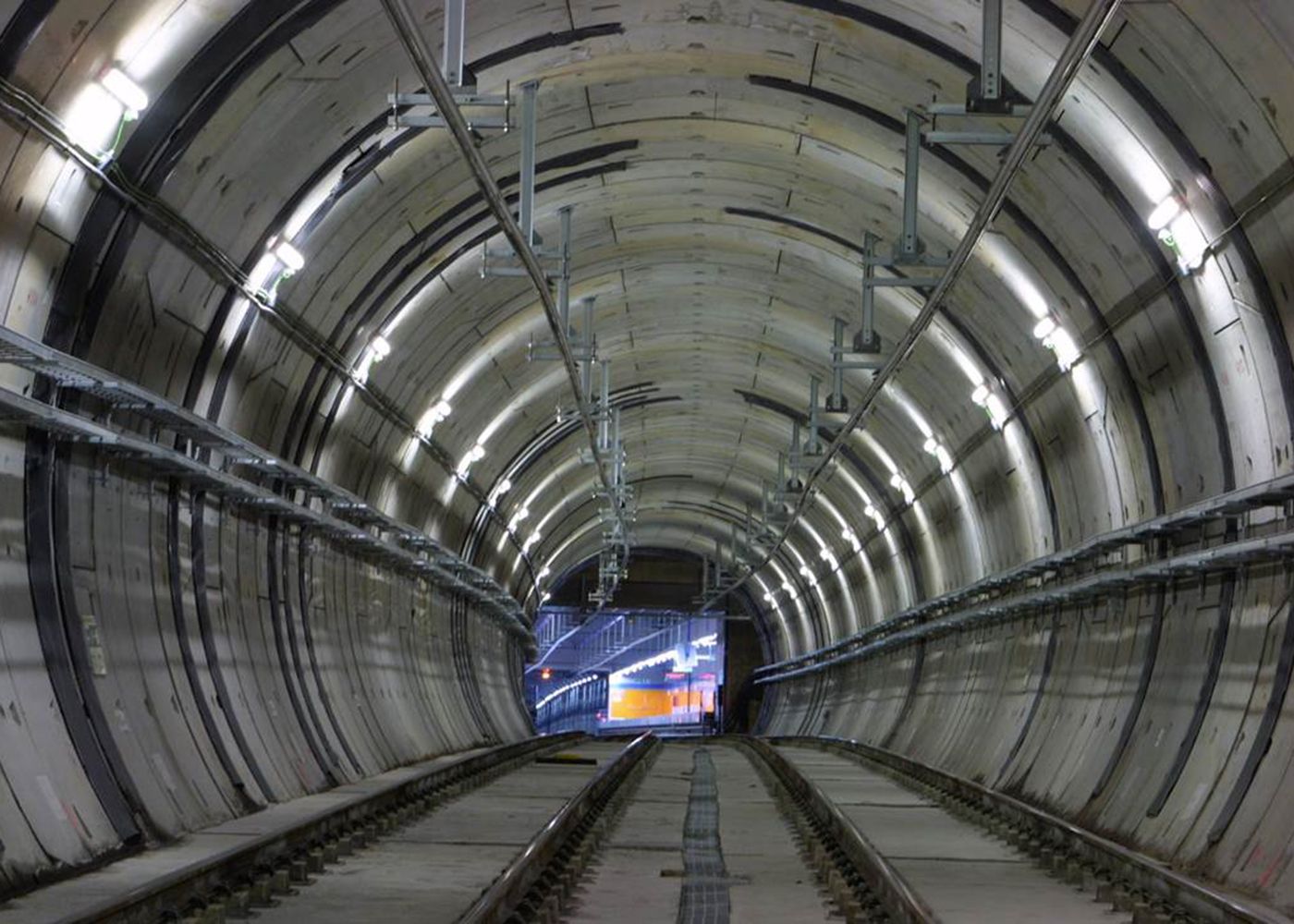Rigid Catenary System
Provide a safe alternative to third rail power with Pandrol’s Rigid Catenary, an overhead system of conductor rails suitable for a range of overground rail installations. This overhead conductor rail system provides electrification for more than 2,000km of global rail network and owes its popularity to its versatility, being suitable for tunnels.
Pandrol’s Rigid Overhead Catenary System Explained
The Pandrol Rigid Railway Catenary System is an overhead conductor rail that offers an alternative to conventional catenary power. The system consists of an extruded aluminium profile clamping the contact wire. The profile is available in different lengths, which are connected electrically and mechanically with aluminium splices. It can be used to replace the contact wire with sustentation wire or the suspended bimetallic T-rail. Key benefits of the Pandrol overhead catenary systems include operational safety, low maintenance costs and extended product life.
- A safe and efficient alternative to conventional catenary systems
- Reduce maintenance and replacement costs
- A versatile and adaptable overhead power solution
Downloads
Advantages of Pandrol’s Rigid Catenary
Compact
Reduce construction costs with an adaptable conductor rail system that’s small enough for use in tight spaces. The Rigid Catenary System’s dimensions mean it’s even suitable for smaller tunnels’ gauges.
Increased current carrying ability
Pandrol’s Rigid Overhead Catenary provides a large copper-equivalent cross-section (approximately 1,415mm²), delivering increased current-carrying capability compared to other conductor rail systems.
Safety
Improve system safety with the Pandrol Rigid Catenary. Its increased current carrying ability means that the distance between substations can be increased, and there is less chance of overheating the rail system.
Fewer components
Ensure quicker installation, easier maintenance, and less stock management. The Rigid Catenary System involves at least ten times fewer components than conventional railway catenary.
Increased product lifespan
Save money with a rigid overhead catenary system providing longer product life and removing the need for frequent replacement. Pandrol’s Overhead Catenary solution is designed with no mechanical tension on the contact wire for durability.
Reliable
Reduce electrical risks and interruptions to service with a reliable choice of railway catenary. The Pandrol Rigid Catenary is designed with a contact wire that doesn’t break off when it’s completely worn.
Technical Capabilities of Rigid Catenary
Aluminium alloy profile
Choose a catenary train system built for quality. The Rigid Catenary System’s aluminium alloy profile is manufactured by extrusion and heat treatment. It is available in different lengths and two heights (80mm and 110mm).
Copper contact wire
Allow operative OCS voltages from 750 to 25,000 V without any feeding supply with this conductor rail power solution. The copper contact wire provides a large cross-section for the current and is inserted using a ‘contact wire trolley’.
Joint plate
Rely on the Pandrol Rigid Overhead Catenary System to deliver perfect alignment between rail profiles thanks to its self-centring aluminium joint plate.
PVC covers
Rely on the Pandrol Rigid Overhead Catenary to deliver high performance throughout its long lifespan. The system comes with PVC covers to protect the aluminium profile from environmental conditions like heat and humidity.
Suspension
Ensure electrical safety. The Rigid Overhead Catenary’s aluminium profile is suspended by insulated supports with hanger clamps. Earth and electrical connections are clamped directly onto the bar.
Gauge
Adapt your Pandrol conductor rail catenary system to smaller tunnel sections thanks to its small size and compact gauge compared to conventional catenary.
Certification
Continue to meet and maintain European Standards (ENs) with every component of your rail system, including Pandrol’s Rigid Catenary, which is also STI-certified.



